The Seacrest Drill Ship a.k.a ‘The Scan Queen’
Written by Stephen Burton
(Southern Gulf of Thailand)
Depth 70meters ; Trimix diving only
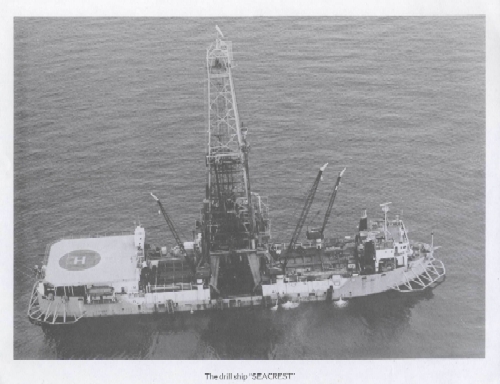
Sunk by ‘Typhoon Gay’ 3 November 1989.
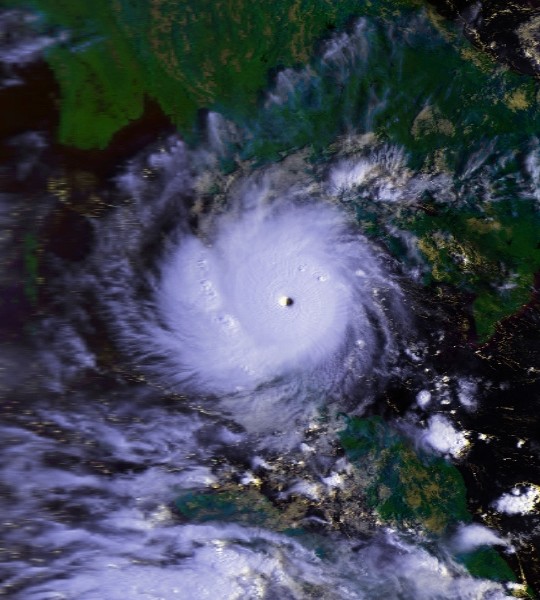
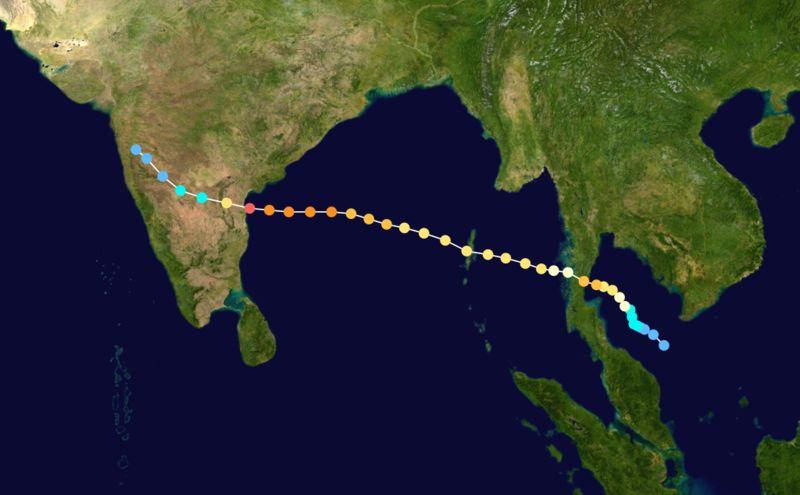
source: Wikipedia
Tonnage : 4,400 gross tonnage, Length : 110 m Breadth : 20 m Draught :6m
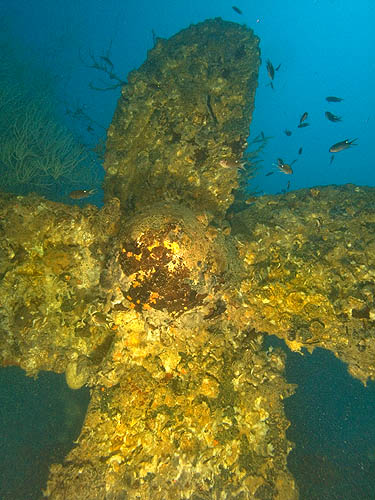
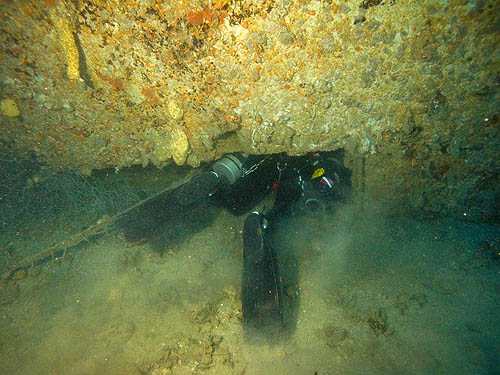
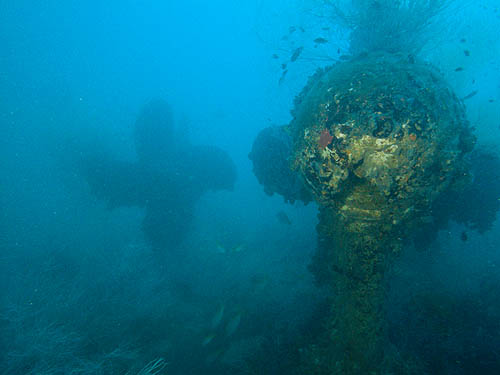
Details of Sinking:-
Sunk by ‘Typhoon Gay’ 3 November 1989.
91 rig workers of many nationalities were killed in the disaster, leading to a massive legal case brought against the ships owners UNOCAL, Thailand(now Chevron) by over 90 bereaved relatives from around the world. After the vessel capsized and the storm blew through, the rescue authorities had problems located it, leading to the only 6 survivors of the calamity spending an unusually long amount of time in the water prior to recovery. The sinking represented the third worst oil rig disaster anywhere, though there is little or no mention of the loss on the www oil rig disaster sites.
Investigation revealed the reason the rig went over was that the drill ship had the Derrick full of 200 ton of pipe, and was still connected to the well head at the time the storm hit leading to a high C of G and compromised stability.
Standard practice with this type of vessel is to lay down pipe when bad weather threatens.
It is alleged that UNOCAL said “No” to stowing the pipe so as to save time resulting in 91 deaths.
(See different accounts and updates to this controversial sinking below)
The SeaCrest did not sink immediately after capsizing and stayed afloat for several days. Veteran UNOCAL Commercial Diver and well known Thailand technical diver Fred Evans was involved in the SeaCrest body recovery exercise. Fred repeatedly entering into the tangled mess of the capsized sinking Seacrest to recover crew members bodies in what had to be one of the nastiest recovery dives I have ever heard of. Diver/Engineer ‘B2’
UNOCAL – The SeaCrests owners at the time of the disaster is now a defunct company – more info here
 Update 16 December 2012
Update 16 December 2012
I just want to say thank you and if you could please pass my thoughts and prayers to those who were affected by this disaster then please do.
I think people sometimes think that since it is in the past, people have forgotten. They haven’t.
There are many who were deeply affected by this. I’m one of the descendents of those who died that day, my father was on the Seacrest as a geologist. I remember meeting a man who came by our home in Thailand who wanted to pass his condolences and thanks, he said my dad gave up his place on the helicopter to him before the storm grew worse.
I remember the long court case, I remember the night we watched the news when the storm broke, I remember every detail of that day and the horrible period that followed without our father even though I was only 7 years old.
Years have gone by and I still think of him and those who lost their lives that day. I think of how hundreds and thousands of families are constantly affected by events like this. When I go diving, I always have it in the back of my mind. It is a love/hate relationship with the sea. I suppose I’m writing to simply say that I hope they don’t feel alone, that they’re also in my thoughts. Thank you for creating this website, for keeping the memory on, that years from now these people will not be forgotten. (author:- anonymous)
 Update 31 January 2012
Update 31 January 2012
REPORT – INVESTIGATION OF EVENTS SURROUNDING THE CAPSIZE OF THE DRILLSHIP SEACREST 128pages 428Kb(PDF)
Prepared by Failure Analysis Associates®, Inc.
Update 04 November 2011 ( Chris Tramonte, Tramonte & Associates. Houston, Texas, USA)
I worked on the case here in Houston. I recall there being a crew compliment of 97 of which 91 were killed. I recall one European survivor and five Asians. I specifically recall the conclusion regarding the capsize. The experts concluded that the 90 foot sections of drill pipe in the stack didn’t help, but that is not what caused her to go over. As she lay in her drilling mode, the Seacrest had an 8 anchor pattern — two bow, two stern, two port and two starboard. Her orientation at the time was bow to the West and she took beam seas as the storm approached. The footage from the ROV showed all of the Port side anchor cables parted and all of the Starboard side cables intact. The conclusion was that the Port cables parted in the storm and the vessel drifted over its Starboard anchors until the Starboard cables became taught. She was pulled over by her Starboard anchor cables. She did not sink. She was found capsized and floating two days later by the Supply Vessel Westerator. UNOCAL scuttled her.
I have been active in the oil field since the middle of the 70’s and I have worked for Reading & Bates (on the drillship E.W.Thornton) and for Atwood Oceanic (on the drillship Chancellorsville). The Seacrest was a sister ship to Chancellorsville and on the latter vessel I spent over 6 years before I had to leave as the rig was taken out of service (due to the slump in the oil drilling business). I therefore feel that I know this is a type of vessel fairly well. I was employed as chief engineer (marine department) on the Seacrest when the top drive unit was installed on the derrick. The installation work was performed when alongside in the port of Sattahip (Thailand). I cannot recall who was responsible for the installation of the top drive unit. I was not involved with the work at all, nor was the captain…though we both protested and pointed out the risks involved by placing such heavy equipment that high up on the derrick…and we were shocked when we found out that there were no plans to compensate the installation with appropriately placed ballast. Both the captain (Alistair Cooke) and I were worried…and tried to communicate our worries to the rig management. However, we were met with disbelief, and the manager let us know that “others, who knew more than we did,” had said there were no problems at all with the installation. Besides, we were told, the ABS (American Bureau of Shipping) had approved the installation…something we had a hard time believing – we simply had to accept it. We were never shown any papers confirming that the installation had been approved by the ABS…meaning that we had no information about how we had to operate the vessel in order to remain within safety limits (amount of ballast in the tanks, etc.) Our requests for this basic safety information were studiously ignored. Personally I was outraged when we left the port of Sattahip without performing a simple inclination test. We had to leave without knowing anything about the altered stability of the vessel. Already when leaving the port of Sattahip we experienced problems, as the vessel leaned over heavily when we had to make a turn…and it took a very long time for the vessel to straighten up again…a clear indication that the vessels stability had been seriously compromised. The captain, taking the vessel from port to the drill site, was the relief captain (I cannot recall his name) and I am sure he will verify my statement about the problems he had when leaving port…I remember clearly how upset he was…upset and not a little bit frightened…as was I. When we arrived at the drill site I was still upset and angry having “idiots” claiming that there were no risks…but my voice was ignored and, in short, I was told that I “knew nothing” and that I was “full of bullshit”…it even came to blows when I confronted one of the most ignorant and most vociferous persons on the crew – the subsea engineer. Shortly after I had left the vessel at the drill site (normal crew change), I received a call from the rig manager telling me that I was not welcome back…and I remember that I laughed…telling him that there was no way in hell that I would return to that vessel…to do so would be to risk my life and I had no intention in doing so. Afterwards I received a mail from Captain Cooke who let me know that also he had been told not to return to the vessel. His position had been taken up by someone hired in Thailand and my position had been taken up by a mechanic without any marine engineer’s license. Some time after the disaster (which, incidentally, shook me to the core…a lot of good people went down with that rig, and I blamed myself for not having pushed the safety issue further) I was once more contacted by Captain Cooke who had received a request to serve as a witness in a court hearing about the incident. He let me know that they (the lawyers) had mentioned that they wanted me to do the same…something I readily agreed too… However, I was never called and I later found out that the company managing the Seacrest had gone into receivership. I thought that this was the end of the story…but apparently it isn’t over yet…and if I can do anything to help those who lost their loved ones then I am more than willing to do so… Note! The information above is written down by request and on my own free will. That I felt it necessary to do so is based on the information (which I received only recently) that there has been much talk about the drill crew leaving the drill pipe in the derrick…and thus they have been blamed for causing the incident. The drill crews onboard at the time were experienced and I have no doubt at all that they would follow the standard practices used in such situations. Thus I am sure that the incident was not caused or aggravated by any neglect on their side. In my mind the incident was caused by the instability of the vessel…and I guess nobody is refuting that. However, that instability was not caused by pipes remaining in the derrick; the instability was caused by the installation of the top drive…which I feel is something that should be investigated seriously.” |
Update 3 February 2010 (Chris Willman, Former Senior Field Engineer, Songkhla, Thailand)
There were 5 Seacrest survivors. One was a Singaporean diver. I had transferred from the Seacrest to the T-7 (Robray Tender-7) 3 – 4 weeks before the typhoon hit. Many bodies were never recovered.
Update 18 Aug 2009 (unknown source)
Your web site regarding the Seacrest disaster is quite accurate with one exception. You stated that there were only 2 survivors when in fact there were 6. The survivors were 2 Indonesian divers and 4 Thai Roustabouts. I was working in Satun field when the Typhoon formed on top of us with the terrible results that followed.
+++++
The legal proceedings that followed the sinking are mentioned by UNOCAL’s legal representatives. In Sandoval v. UNOCAL, our client UNOCAL owned the drill ship Seacrest which capsized during Typhoon Gay in the Gulf of Thailand in 1989. Plaintiffs representing over 90 decedents sued UNOCAL in Texas and throughout the world. Our lawyers were required to completely learn the Thai civil code in order to defend the case.”
The unique character of ‘Typhoon Gay’ which sunk hundreds of fishing vessels with its 100knt+ winds and 40ft waves is discussed at https://www.cnmoc.navy.mil/nmosw/thh_nc/thailand/sattahip/text/sect7.htm . “Typhoon Gay hit Southern Thailand Chumphon province in 1989, the only typhoon-strength storm ever to reach Thailand in recorded history. Gay killed 529 people and left 160,000 homeless”.
Note:- Access to the Typhoon gay data is via a secure US military web site.
You will need to accept a security certificate to read the extract and your IP will be logged.
The worlds worst oil rig disaster was the catastrophic fire on the Occidental Oil platform ‘Piper-Alpha’ located in the North Sea late in the evening of 6 July 1988, causing a devastating blaze which killed 167 of the 226 men on board. Other mobile oil rig disasters include Alexander L. Kielland(123 dead-1980), Ocean Ranger(84 dead-1984) US-OIL drill ship(81 dead-1981).
+++
Listings of Major Oilrig disaster are available at the following links:-
http://www.oilrigdisasters.co.uk
Wrecks details
REPORT November 2009
Author: (name withheld – confidential) Drill Site Supervisor
Seacrest In Memoriam 3 Nov 2009
The Seacrest did not have the amount of pipe in the Derrick as mentioned by unknown persons 200 Tons is a fabrication, she was not connected to the Wellhead the Upper Package was disconnected from the Sub-Sea BOP. Prior to disconnecting Pipe was run to the 9-5/8 Shoe and Hung off in the Sub-Sea BOP’s leaving a majority of the Drill Pipe below the Sea Bed. The upper Package disconnected. The Slip Joint was laid out. The TDS was secured above the Rig Floor and remaining Pipe in the Derrick was secured. There are many rumours as to what happened and that is what they are rumours. The actions on the Seacrest were pieced together by radio contact up to the point of loss of communications, interviews with survivors (witnesses) when they were rescued and the incident fresh in their minds prior to being coerced by suggestion and influence from other parties. I have not forgotten, many have not and never will, some want this incident to be forgotten but that is too their shame “We who knew them will remember them”.
Seacrest’s wheelhouse was forward, not aft, as indicated by Mr. Dixon.
REPORT October 2009
Author : John Dixon Safety Dept
The Seacrest is no-where near Songkla but in the bombdump area of the sea near Cambodia.
I was at Erawan when this accident happened.
There were 5 Senior Staff in the Control Room if you include the Radio Operator and two below deck one in a shower…RIP
Of the 6 survivors 2 Indo Divers and 2 catering Staff who used to fill the emergency rations in the life boats.
They were found near Surah Tani in a smashed in Lifeboat by Thai fishermen. Who themselves had been rescued by Unocal people in the storm.
REPORT 2008
Lies upside down resting on the derrick. starboard side 1m from the sand, port side 4m.
Depth is 75m to sand, 50m to the top of the hull where you can enter through the moon pool at 50m. Great viz and full of fish.
This picture at the top of the page is of another ship from the same yard. The actual Seacrest has Wheel house aft – similar size
Last dived by:- Fred Evans(deceased) UNOCAL
Jamie Macleod, Stewart Oehl and the divers and crew of the M.V. Trident March 2007
MV Trident may be contacted at www.techthailand.com
Last updates
May 2008,Jamie Macleod Jamie MacLeod on the MV Trident [email protected]
15 May 2007, Simon Marquis [email protected] , http://www.oilrigdisasters.co.uk
Anonymous Contributors – A note of thanks
I am indebted to the many friends and relatives of those who perished in this sinking who have contacted me and even travelled to Thailand to meet and discuss this disaster contributing most of the information on this shipwreck disaster research page.
Many still work in the oil industry and due to the politics that still surrounds this disaster have asked to remain anonymous.
Many have quoted fear from the enormous negative publicity and multi-million dollar legal action kicked up by this disaster that still exists to this day, or the fear of loosing their jobs if they say anything that may considered in breach of commercial confidence.
If you have any information or corrections to the data on this page that you would like to contribute anonymously, or if you would like your contact details forwarded to other personnel effected by this tragedy, please contact me, and I will forward your contact details to them for consideration in confidence.